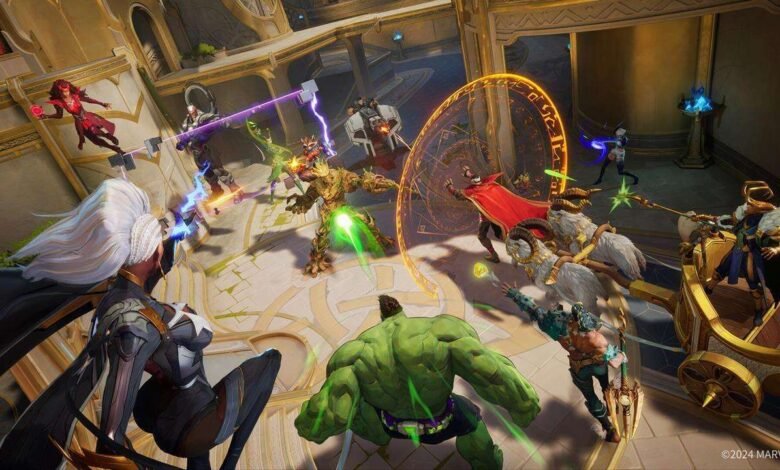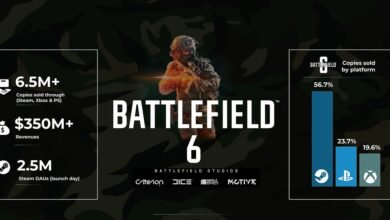Marvel Rivals Made Me Quit Competitive Gaming for Good

▼ Summary
– The author realized they had played over 400 hours of Marvel Rivals’ ranked mode, mostly feeling frustrated while chasing an arbitrary goal.
– They decided to quit competitive gaming after recognizing a pattern of obsessive play across multiple games like Halo 3, Gears of War 3, Apex Legends, and Overwatch.
– The article explores matchmaking systems like SBMM and EOMM, addressing player suspicions that Marvel Rivals uses engagement-optimized matchmaking.
– NetEase denied using EOMM in Marvel Rivals and announced plans to release a developer video explaining their matchmaking system.
– The author concluded that competitive gaming environments are hostile and unhealthy for them, preferring casual gaming experiences instead.
A few weeks back, I abruptly shut down my console after another infuriating match of Marvel Rivals, cursing both the game and its players under my breath. My boyfriend, who often games alongside me, casually asked how many hours I’d logged. The game had debuted right as I transitioned into freelancing, leaving me with plenty of free time. When he mentioned he’d played around 16 hours, I casually estimated I’d probably doubled that.
Then I actually checked my stats, and felt physically ill. Since its December 2024 release, I’d poured over 400 hours into the ranked mode of NetEase’s hero shooter. That’s more than 16 full days. And for the vast majority of that time, I wasn’t even enjoying myself. I was tilted, frustrated, and obsessively chasing a self-imposed rank goal before allowing myself to step away.
Those staggering numbers, combined with a brutal rank reset at the start of Season 3, forced a harsh realization: I had a real problem with competitive matchmaking. So I quit. For good.
This wasn’t my first rodeo with competitive gaming. Back in high school, I grinded Halo 3’s SWAT mode relentlessly, aiming for that elusive level 50. Years later, I did the same in Gears of War 3, chasing level 100. More recently, I gravitated toward Apex Legends’ ranked mode, always preferring it over casual play.
But my longest and most intense relationship was with competitive Overwatch. I’ve sunk nearly 1,500 hours into the sequel alone, almost exclusively in ranked. At one point, I was a globally ranked Moira player on console. I only stopped when burnout set in and Marvel Rivals shimmered with new promise.
I’ve always played competitively alone, queuing solo into ranked matches and almost always choosing support, a role widely considered a recipe for frustration. Without a premade squad, you lose out on team chemistry, and support players often bear the brunt of blame when things go wrong.
In Rivals, no matter how well I played, it never felt like enough to carry a team to victory. The emotional toll of climbing ranks in such a unforgiving role began to wear me down. So when rumors started swirling that NetEase might be using a matchmaking system designed to manipulate player engagement, I felt a flicker of hope. Maybe it wasn’t me. Maybe it was the game.
Matchmaking remains one of the most debated and misunderstood aspects of competitive gaming. I’ve written before about skill-based matchmaking (SBMM), used in titles like Call of Duty and Apex Legends, which aims to pair players of similar skill levels. The metrics used can vary, K/D ratios, playtime, win rates, but the goal is consistency.
Yet players often grow frustrated with how different studios implement SBMM. Overwatch 2 made adjustments in early 2023 to address community complaints, and later that year, Call of Duty fans flooded a Reddit AMA pleading for changes to Modern Warfare III’s system.
But SBMM isn’t the only approach. A 2017 paper from a former EA intern introduced EOMM, engagement optimized matchmaking, which prioritizes player retention over fair play. While EA patented the idea, there’s no confirmation that any of their games, including Apex or Battlefield, actually use it.
Many Marvel Rivals players are convinced NetEase employs EOMM, despite the company’s denial. They published a 2020 academic paper on a system called OptMatch, which considers engagement but doesn’t explicitly favor it over fairness. Still, the idea is seductive: if EOMM were in play, my inability to climb wouldn’t reflect my skill, just a system designed to frustrate me into playing more.
NetEase recently responded to these rumors with a statement on X, asserting, “We want to reiterate that Marvel Rivals does not use EOMM.” They promised an upcoming video detailing their matchmaking and ranking philosophy. But by then, it was too late for me.
Learning the truth, or lack thereof, about matchmaking didn’t change how I felt. The sheer volume of time I’d wasted on Rivals had already seared itself into my consciousness. It made me reflect on two decades spent trying to excel in competitive shooters, spaces that are often hostile, especially toward women.
I realized I’d been subconsciously trying to prove I belonged, that I was just as much a “gamer” as anyone hurling insults from behind a screen. Marvel Rivals shattered that illusion. Even if some hidden algorithm was pulling the strings, it didn’t erase the frustration, the anger, or the exhaustion.
These games, I finally admitted, are bad for me. There are far better ways to have fun than healing an angry DPS player who’s just told you to, well, you know. These days, I’d rather drop into Fortnite as Lady Gaga, take down a banana in a suit, and hit the A$AP Ferg “Socks” emote before cruising off in a yellow Corvette with Sabrina Carpenter blasting through the speakers.
So long, competitive gaming. I won’t miss you. Not even a little.
(Source: GameSpot)




